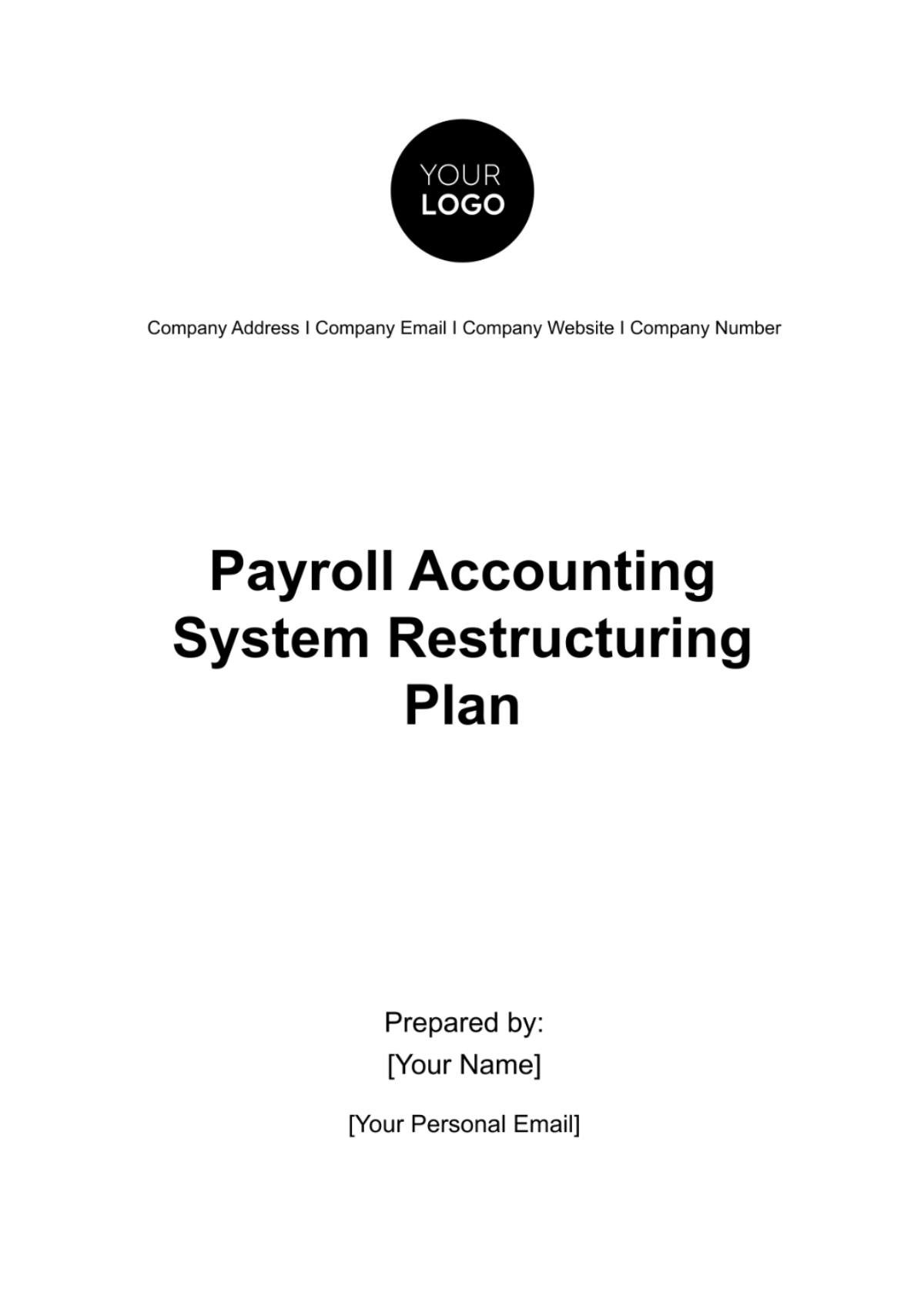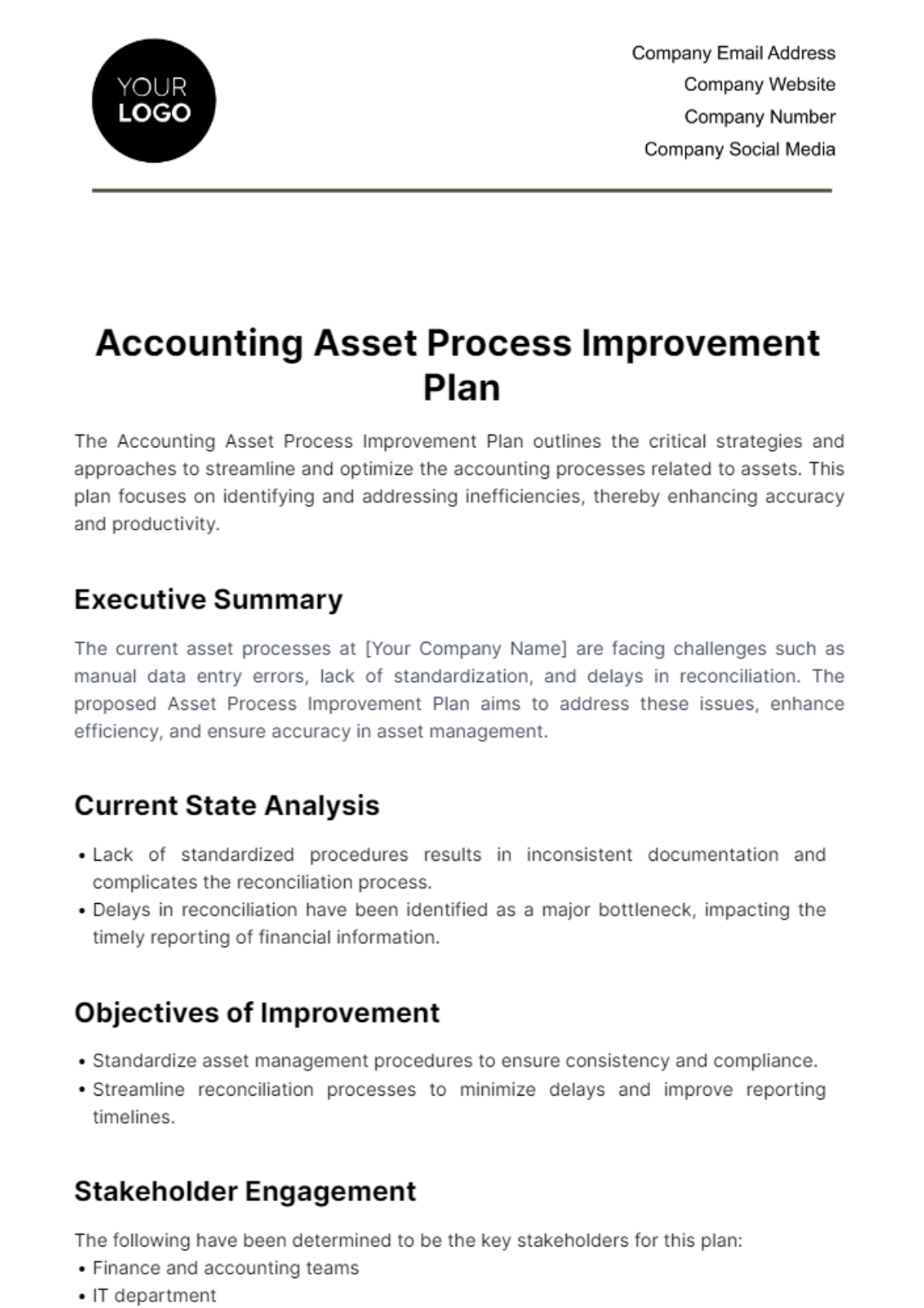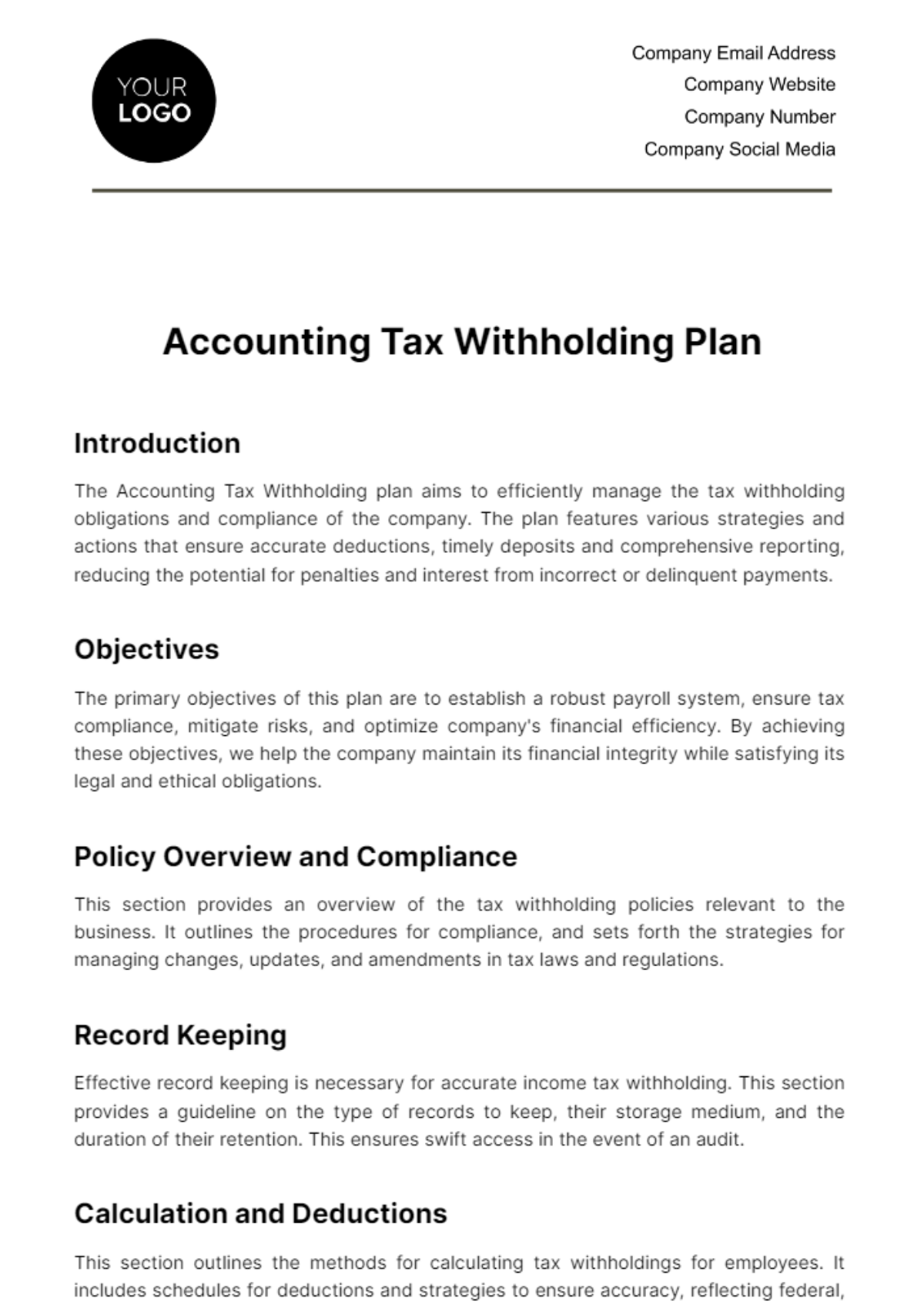Accounting Asset Process Improvement Plan
The Accounting Asset Process Improvement Plan outlines the critical strategies and approaches to streamline and optimize the accounting processes related to assets. This plan focuses on identifying and addressing inefficiencies, thereby enhancing accuracy and productivity.
Executive Summary
The current asset processes at [Your Company Name] are facing challenges such as manual data entry errors, lack of standardization, and delays in reconciliation. The proposed Asset Process Improvement Plan aims to address these issues, enhance efficiency, and ensure accuracy in asset management.
Current State Analysis
Lack of standardized procedures results in inconsistent documentation and complicates the reconciliation process.
Delays in reconciliation have been identified as a major bottleneck, impacting the timely reporting of financial information.
Objectives of Improvement
Standardize asset management procedures to ensure consistency and compliance.
Streamline reconciliation processes to minimize delays and improve reporting timelines.
Stakeholder Engagement
The following have been determined to be the key stakeholders for this plan:
Finance and accounting teams
IT department
Department heads responsible for asset management.
In addition to determining stakeholders, regular meetings and feedback sessions will be organized to ensure all stakeholders are actively involved and aligned with the improvement objectives.
Proposed Changes
Here are the proposed changes of this plan:
Implement automated data entry tools to reduce manual errors.
Introduce standardized asset documentation templates and guidelines.
Utilize a centralized platform for real-time tracking and reconciliation of assets.
Staff Training and Upskilling
For effective application of new methodologies and technology, it's absolutely necessary that our staff members acquire the appropriate training and skills. This requirement necessitates a committed focus on regular training sessions, which will provide the required knowledge and proficiency to our accounting team. With such a system in place, the company can guarantee that they will become proficient in the optimum utilization of the latest systems. This process ensures that they have the most current and efficient tools at their disposal to realize the maximum potential of the systems in place.
Technology Integration
Integrate an advanced accounting software system to automate data entry and reconciliation processes.
Provide training sessions to familiarize employees with the new technology and its features.
Performance Metrics and Monitoring
The following Key Performance Indicators (KPIs) have been determined (but are not limited to):
the percentage reduction in manual errors
adherence to standardized procedures
improvements in reconciliation timelines.
Additionally, monthly evaluations will be conducted to track progress and identify areas for further refinement.
Implementation Timeline
Phase 1 (Months 1-2): Implement automated data entry tools.
Phase 2 (Months 3-4): Introduce standardized documentation procedures.
Phase 3 (Months 5-6): Launch the new accounting software and monitor its effectiveness.
Regulatory Compliance Enhancement
Regulatory compliance is paramount in accounting. The asset accounting process will be aligned with the latest regulations and changes, ensuring compliance and reducing the risk of violations.
Conclusion
The Asset Process Improvement Plan represents a strategic initiative to enhance accuracy, efficiency, and transparency in the company's asset management processes. It also helps us become more committed to continuous improvement and ensuring a seamless transition to the optimized asset management framework.




























